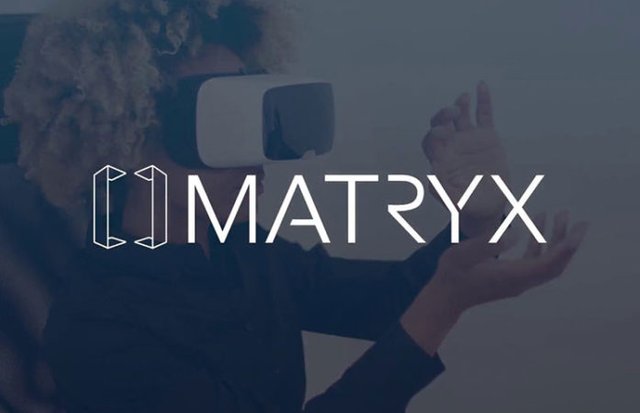A review of Matryx: A decentralized collaboration platform
Matryx is based on the ETHEREUM blockchain and enables collaboration among various professions.
"Matryx reduces friction of collaboration between strangers by providing a common framework and concrete goals."[1]
This is a review of the white paper from Matryx
(current version: 2.01)

imagesource
Why do we need Matryx?
They begin by explaining their "Why" through a fascinating example of history.
Maybe you have heard about the Millennium problems. Seven difficult problems in science, technology, engineering, and mathematics (STEM), which have been selected by the Henri Clay Institue of Mathematics, in 2000. They offered 1 million USD for a solution to any of those seven problems.
In 2003, the Russian mathematician Grigori Perelman was the first to solve one of these problems. In particular, the Poincaré conjecture², which was first formalized in 1903 by Henry Poincaré.
Even though "Richard Hamilton, [...], laid the foundation for Pareman's proof"[1], Perelman was awarded the Millennium price after seven years of peer review.
However, in an unexpected turn of events, he declined the prize money. He argued that the contributions of Hamilton and other mathematicians played a significant role in developing his final solution.
I like this example because it shows the inner fairness of most humans. People don't want to be paid for work they have not done, it just feels bad.
They go on, saying that "new ideas are usually collaborative in nature and are based on other people's existing ideas."[1]
The current incentive structures in especially STEM and many other fields alike, do not reflect the needs of collaborative fields.
Matrix provides a structure that reduces the friction of collaborators. Instead of attributing all credit to one person or group, who proposes solutions based on other people's work.
"Matryx tracks the provenance of assets enables collaboration and divides rewards among all participants."[1]
Thereby, Matrix can reward each step towards the goal separately.
Problems

Image source
Distribution and discovery
Today, "Universities, corporations, institutions, and individuals host and share their resources in separate "siloed" databases, often with tightly controlled access."[1]
Therefore, it is almost impossible to find all current and past research on a given topic without navigating through an unorganized pool of citations and licenses.
"This wastes brainpower, time, and money." [1]
The term predatory publishers, refers " "[...] to publishers who encourage researchers to publish without proper peer review." [2]
As a result, researchers must publish high volumes of low-quality papers due to demands to advance their careers in their respective institutions." [1]
Attribution
The problem of attributing value to contributions is one of the hardest to solve. often, contributions are not even tracked with any degree of accuracy, because the path from problem to solution is often not clear enough.
Therefore, creators are not properly compensated for the usage and/or remix of their work.
Especially in STEM research, 3-D object creation, and music (re)mixing, this problem is hard to tackle.
3-D object creation and distribution
The modern web primarily consists of 2-dimensional forms of data. For instance, even 3-content can only be represented in a 2-dimensional manner, because of the limits of our screens.
"However, research has shown that "while 2-dimensional maps afford easy interaction, 3-dimensional projections decrease information loss"[3]"[1]
Therefore, information-dense fields will probably prefer interactive VR and AR to traditional 2-dimensional displays. Matryx will support this shift.
they also emphasize the need for new, more efficient forms of storing 3-dimensional data. The traditional way of storing 3-dimensional data includes storing every vertex and edge of an object, which results in huge files often thousands or millions of lines long. As a solution to that problem, they mention the idea of storing 3-dimensional objects on the basis of generalized mathematical descriptions, which are often easier to transmit and process but are more difficult to create.
What is Matryx?
"Matryx is composed of a smart contract system and a supporting framework for traditional applications. The smart contract system provides a public ledger of open projects and their associated payments("Bounties") and proposed solutions ("Submissions")."[1]
The interaction between bounties and submissions is the core of the Matryx platform.
Bounties are determined by the bounty-creator, who offers a specific amount of money (MTX tokens) for the work he/she is willing to pay. The amount is locked in the smart contract system for the duration of the bounty (every bounty has a specified duration-time), and the bounty is linked to bounty-requirements, which are posted publicly and are indexed in the smart contract system as well.
Bounties primarily exist to encode the structure of the following tournament and inform users of both the desired content of submissions and the rewards of participation.
"Once the bounty is public, users begin creating submissions in an open multi-round contest (a "Tournament")."[1]
Submissions are made via a 3rd party application, which is appropriate to the work being performed. initially, the platform will only target Nanome software, Calcflow, and Nano-One, but a wide range of applications may be used to develop submissions.
When a user decides to submit an asset,"[...] the asset is hashed, signed, and made publicly available."[1]
Also, submissions must be bound to a specific number of tokens, thereby contributors are encouraged to make a minimal number of submissions. Restricting the impact of Sybil and other attacks.
The winner of each round is chosen by the bounty-creator, within a specified time. The author of the solution will be rewarded, whether or not it is a complete solution.
A Tournament consists of one or more rounds of submission, collection, and evaluation.
When a given tournament has ended, the authors of submissions which contributed to the solution are rewarded.
Image source
A common area will be created, where creators can share their contributions and leave a digital fingerprint that verifiably proves their involvement.
"Individuals or organizations will be able to define their reward mechanisms for digital works, create their own licensing terms, and prove authenticity and ownership of works via a public ledger"[1]
Where does Matryx stand at the moment?
The official video
Some other sources
A great article about: Matryx Alpha: A how to guide
Matryx's youtube channel
see all posts on the Matryx Blog
Literature citations
[1] Steve McCloskey et al. (2017) Matryx: A decentralized Research Platform, pp. 1. URL
[2] Elizabeth Wager (2017) Why we should worry less about predatory publishers and more about the quality of research and training at our academic institutions, pp. 87-88. URL
[3] J. Poco et al. (2011) A framework for exploring multidimensional data with 3d projections. URL
( )
)
I hope this Review could give you a good introduction to the Matryx platform, and I hope this will have a huge impact on the form we are collaborating in the future.
For other interesting topics like this one, have a short look at My Blog.
I hope all of you have a great day and could get some value from this article.